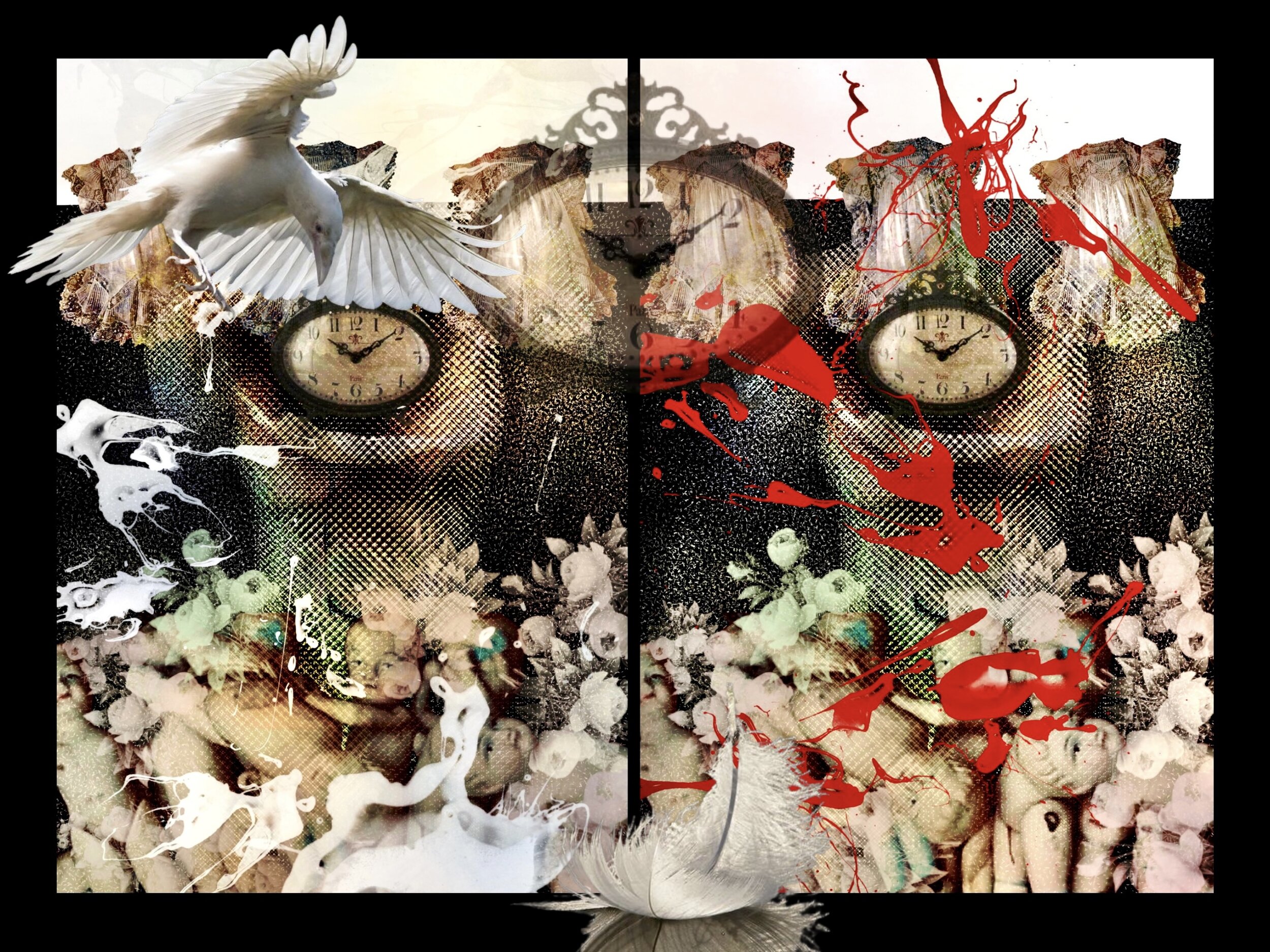Lize Kruger
United Kingdom
Through my work, I developed a visual language that makes sense to me. I never shy away from the difficult things in life but always need to search for a slither of hope in order not to become entirely consumed by despair because life will always present us with polarities, and we have to experience both. Sometimes even the most challenging thing has the potential to offer us an incredible gift. First, however, we have to be willing to see it.
During my work process, I am always eager to see how one image can evolve into another one. I only recently explored the use of the digital medium as an extra tool for expression. It is an exciting process that often takes me on surprising journeys of discovery. Creating a message is usually exciting because I have to find the perfect balance between what will invoke emotion in my viewer and make people think about it long after they studied the artwork. I prefer to work with accidental elements that occur when I superimpose images. It forces me to adjust and to find new potential in what is in front of me. I love the challenge the process presents to me because it pushes me out of my comfort zone. It is also the perfect analogue to my personal life. I had to reinvent myself numerous times during my lifetime, so this creative method works very well for me.
TIME IS RUNNING OUT IV
1. What’s your background?
I am a South African artist and received my BA Fine Arts Degree in 1988 from The University of Northwest in South Africa. During the eighties, until 2008, I had numerous solo exhibitions and participated in group exhibitions through the years. In the early 2000s, before I moved to the UK in 2014, i taught art lessons to students at a quadriplegic facility and an underage abuse victim's centre.
After a ten year Sabbatical from the Arts, I've resumed my art career in 2018 by accepting a commission from the Directors of The Lost Gardens of Heligan in Cornwall, for their Centenary celebrations. Since then, I have exhibited internationally and have featured in various publications.
2. What does your work aim to say?
I aim to address social and global issues, for instance, child abuse, the refugee crisis, mental health, Life and Death. I try to work through the discomfort that injustice and collective pain gives me by giving it a visual images.
I also try to create an awareness that we are in this together. Especially when it comes to mental health and suicide. I am on a mission to rid it from all established stigma. More pain is being created by the public’s lack of compassion and understanding of these very human and natural conditions. We need to talk about this in order to achieve any healing.
3. How does your work comment on current social or political issues?
My work almost always focuses on social and political injustices. Throughout history, artists were the conscience of governments. I feel responsible for addressing this, no matter if the message reaches them or not. I find it impossible to stand in apathy when I witness any atrocities.
4. Who are your biggest influences?
There are so many artists whom I admire, for instance Francis Bacon, Penny Siopis and the amazing Judith Mason, to only name a few. Regarding influence, I tend to go inward, find my metaphors and symbols that I prefer to work with, and exhaust them completely! That is why I love working with a series of works. I am relentless with a certain image until I’m certain it has communicated everything I wanted it to communicate, I will move on to the next one.
5. How has your art evolved over the years?
I have a traditional art education and was an oil painter most of my life. During my studies, I became aware of the limitations of my two-dimensional medium and started to make more conceptual pieces inside a box frame and different see-through layers. As a result, in the early 2000s, almost all my work consists of more than one layer. However, the costs became an obstacle if it was not a commissioned piece or body of work. So, with the pandemic effect, I turned to an interdisciplinary method of traditional, digital and photographic mediums to achieve the same layered effect without bankrupting me!
6. What does art mean to you?
My art is my creative tool to communicate what really matters to me, my crutch when I need to escape, and my daily sustenance.
7. What’s the most valuable piece of art to you?
I made a series of paintings for myself about my late son. While working on it, I was visited daily by a little Red Robin. The feeling of confirmation and comfort brought to me is still very strong whenever I look at these works.
8. What’s next for you in the future?
I have learned not to think too far ahead. The only hope I have is that the passion I work with will resonate with my global audience. There are few things more satisfying than when someone gets back to me and confess that a particular work touched them deeply.
TIME IS RUNNING OUT II


